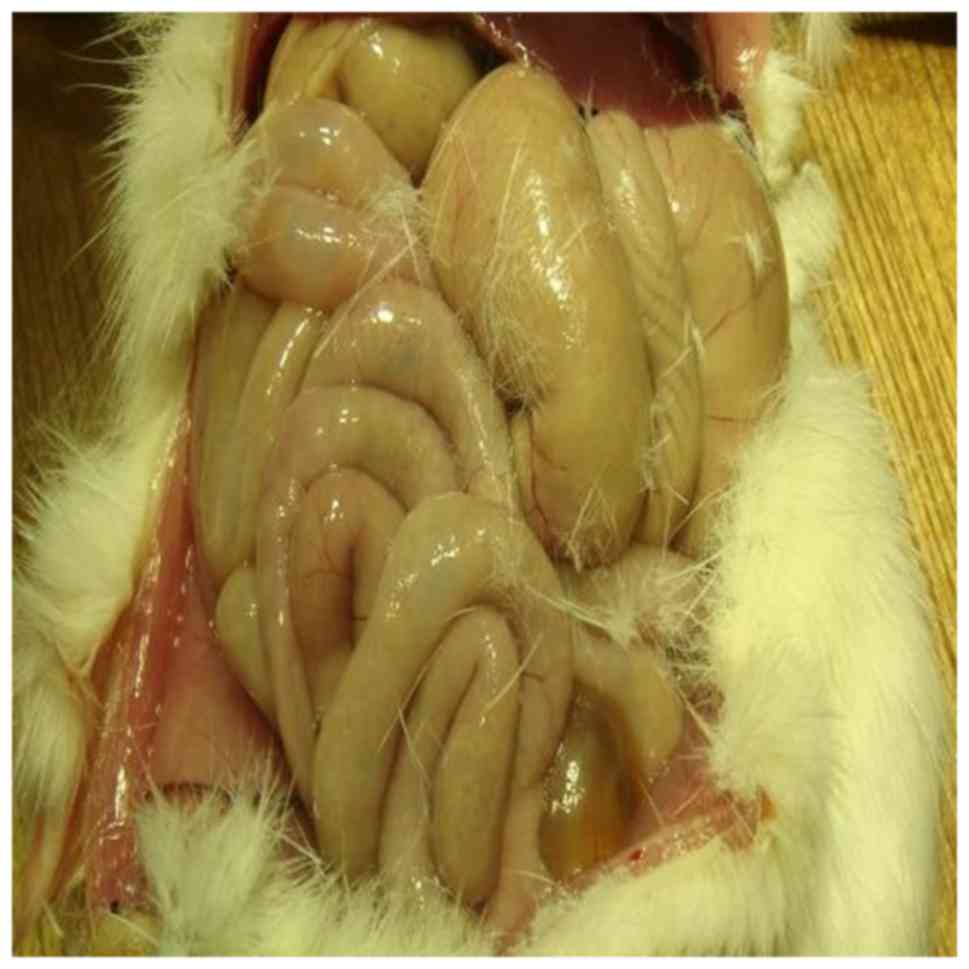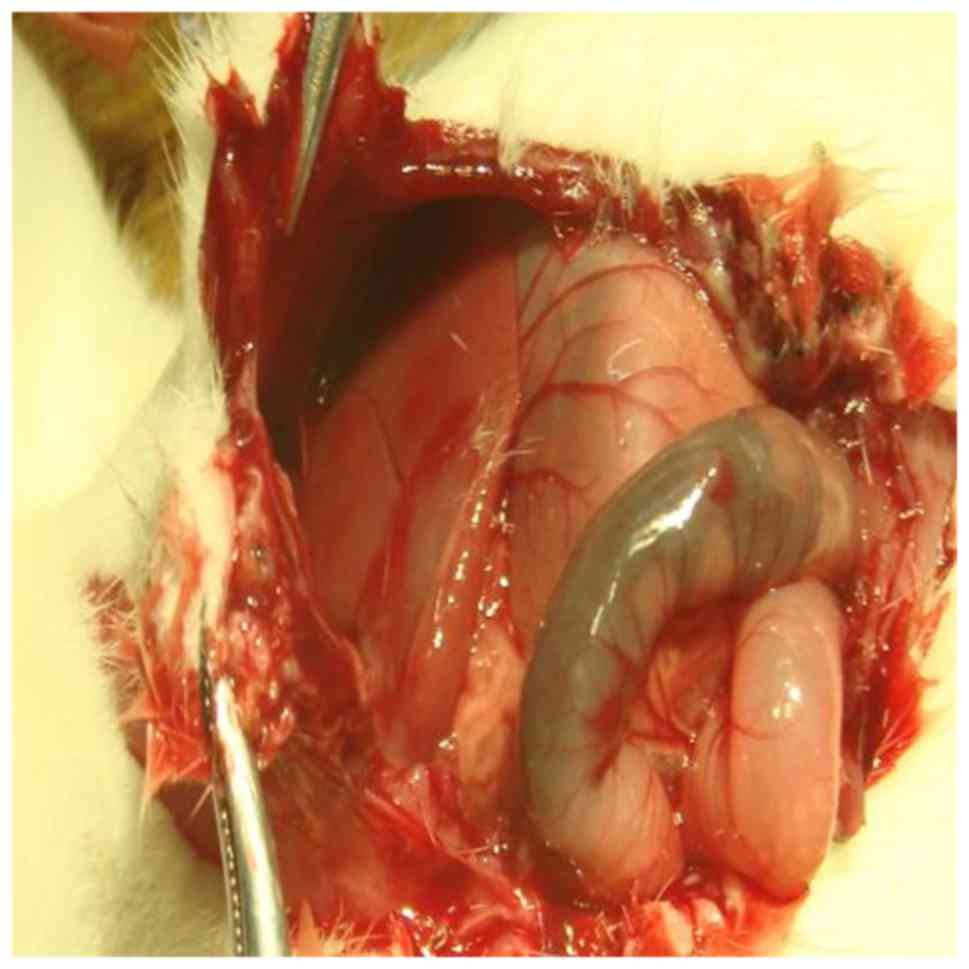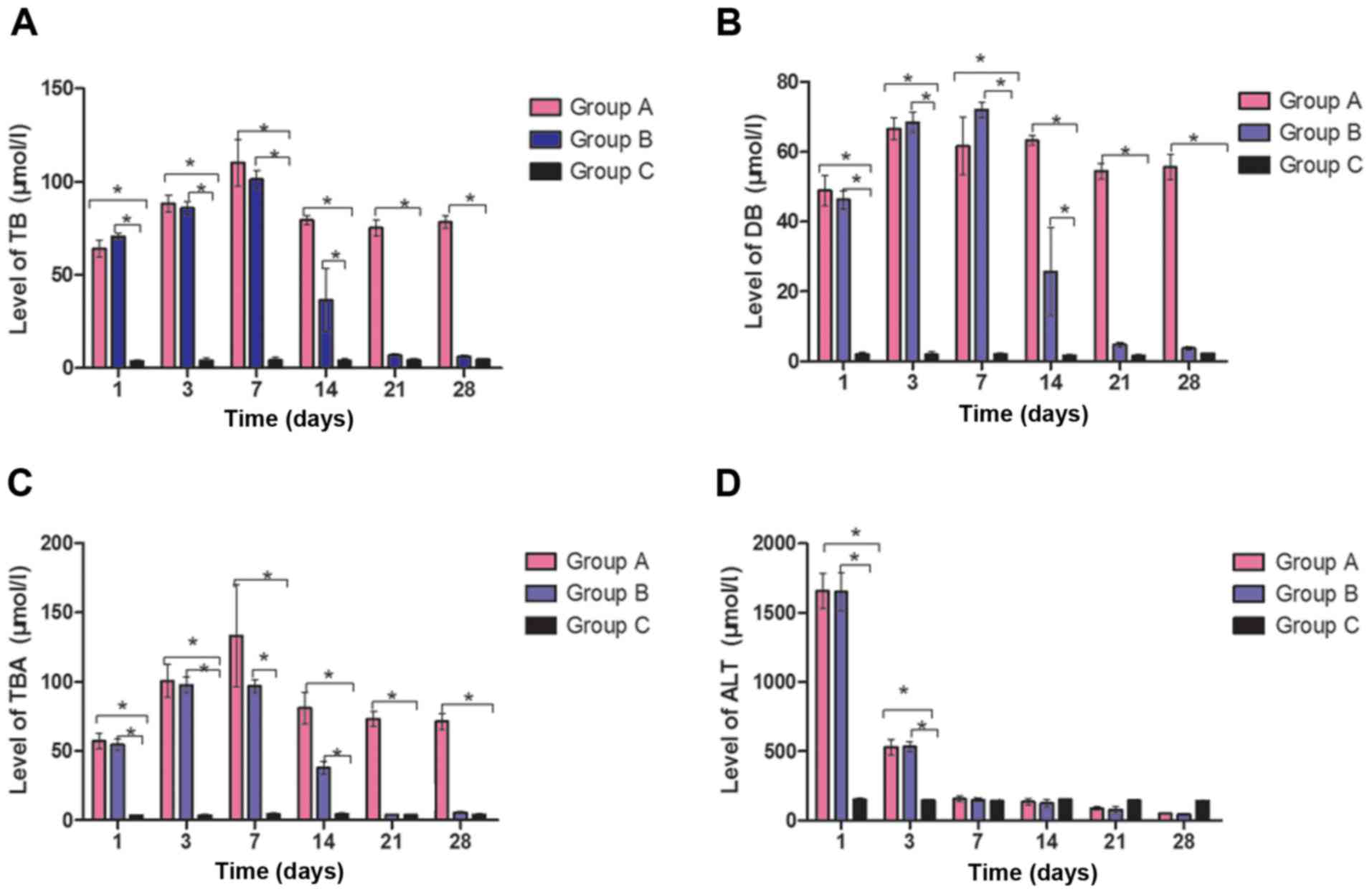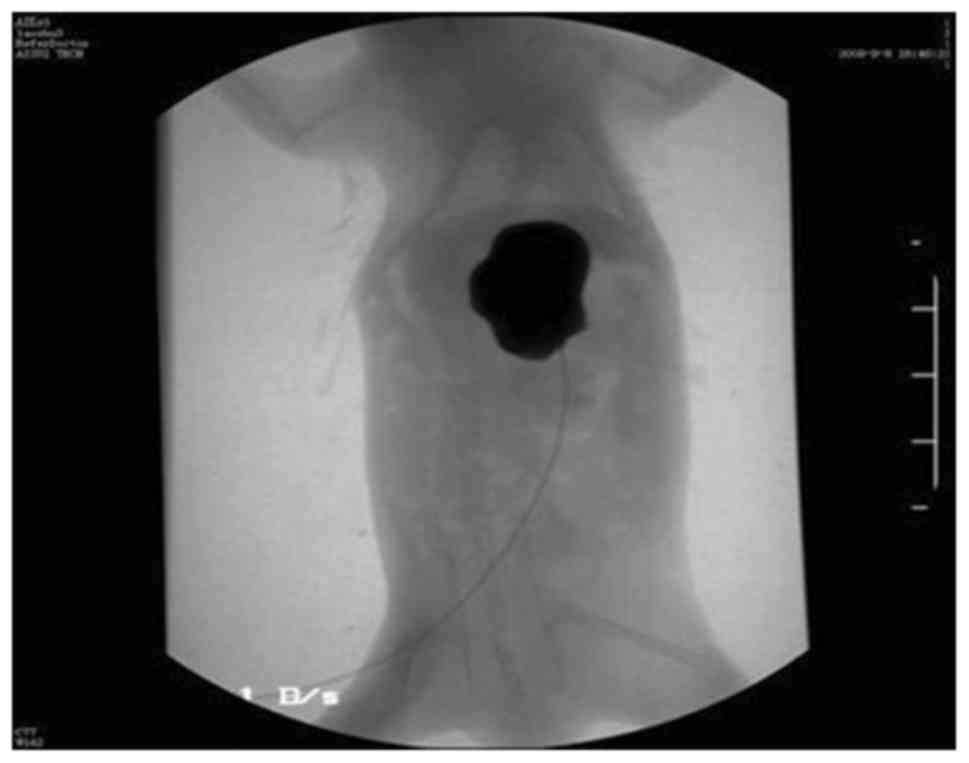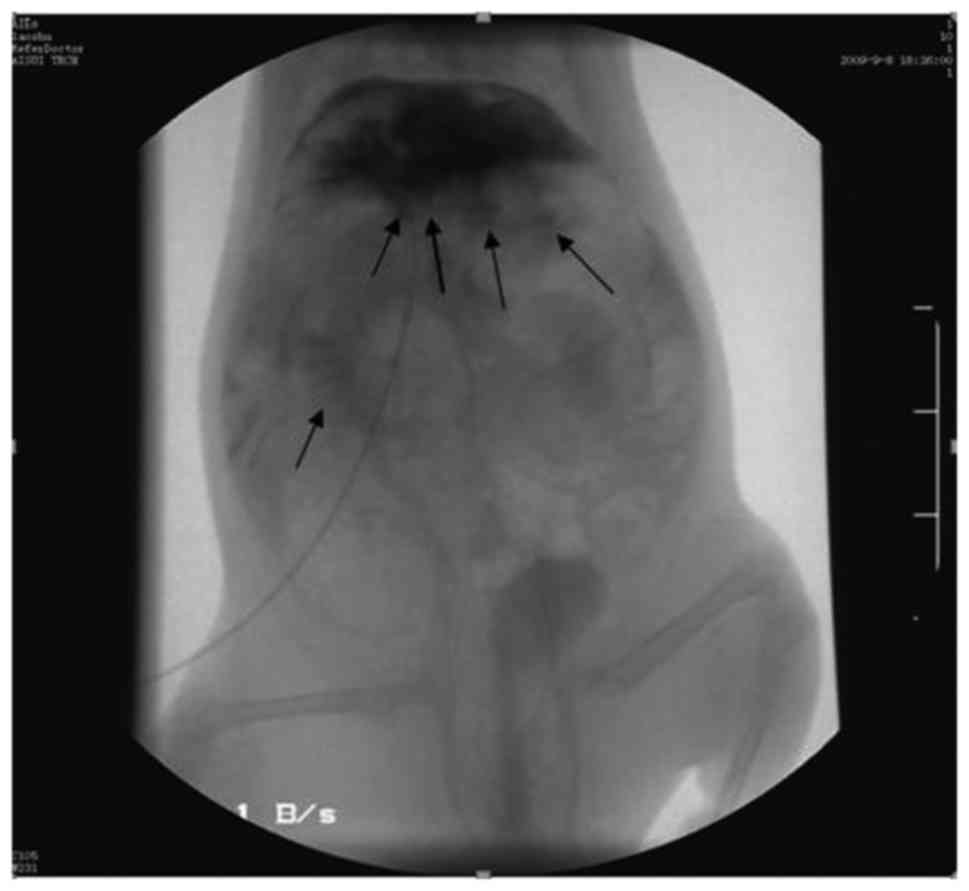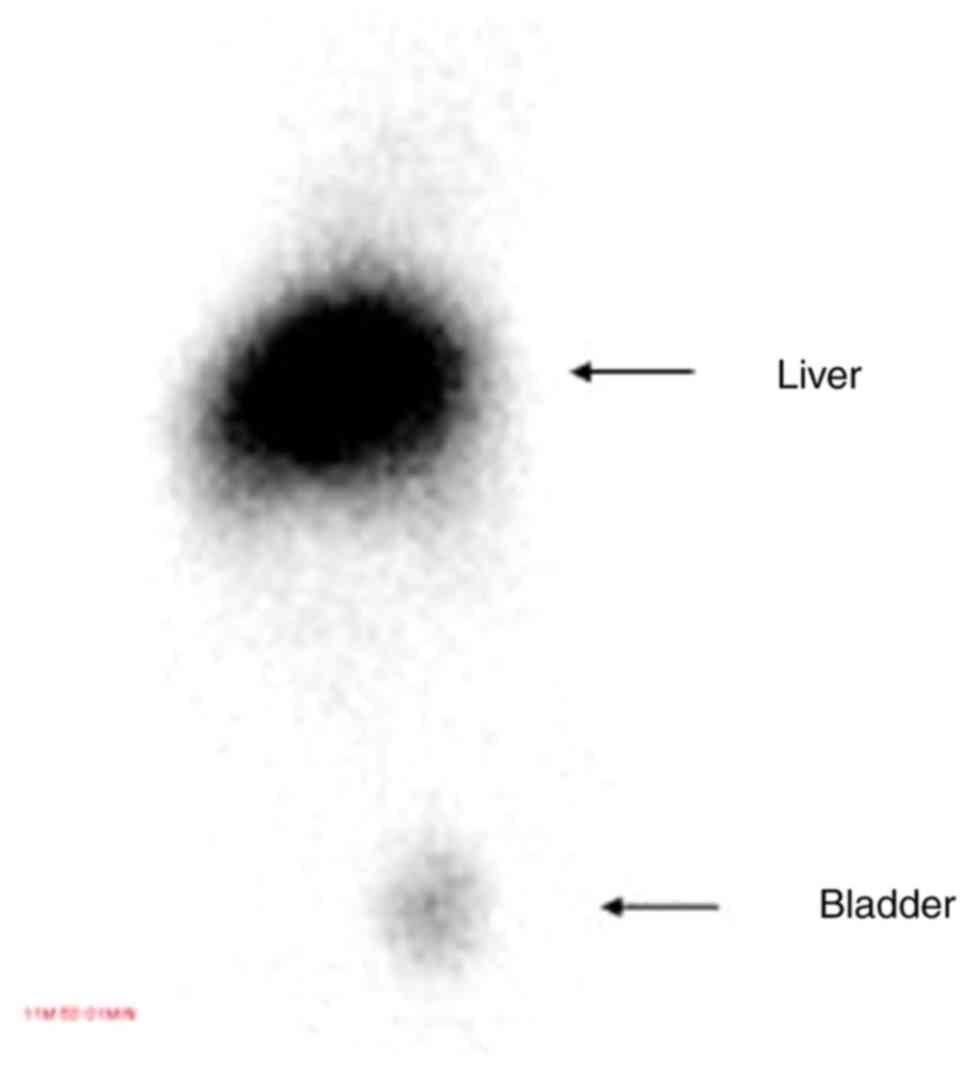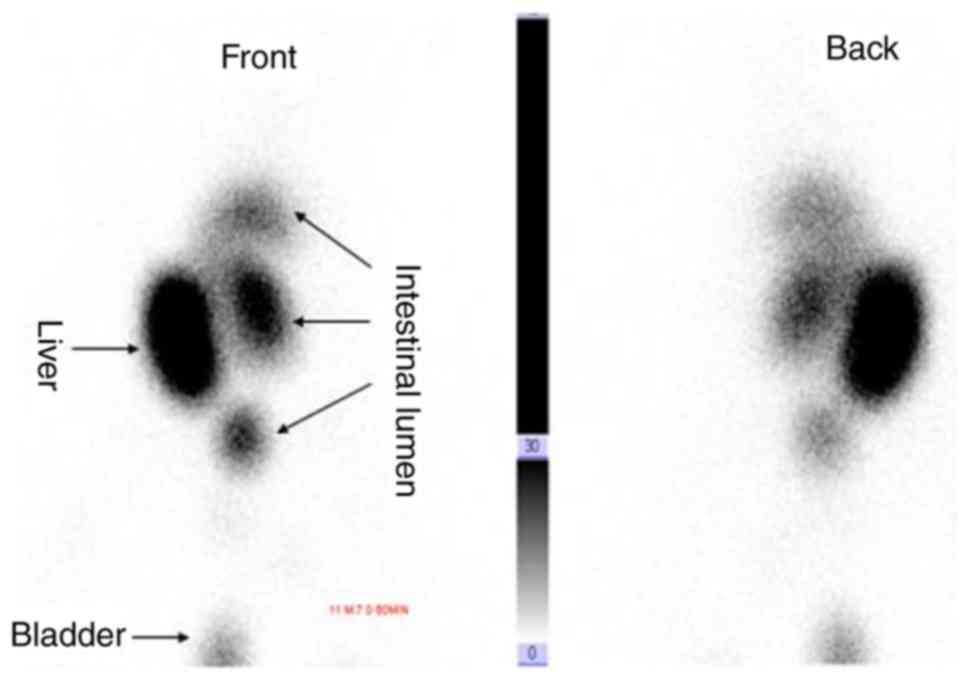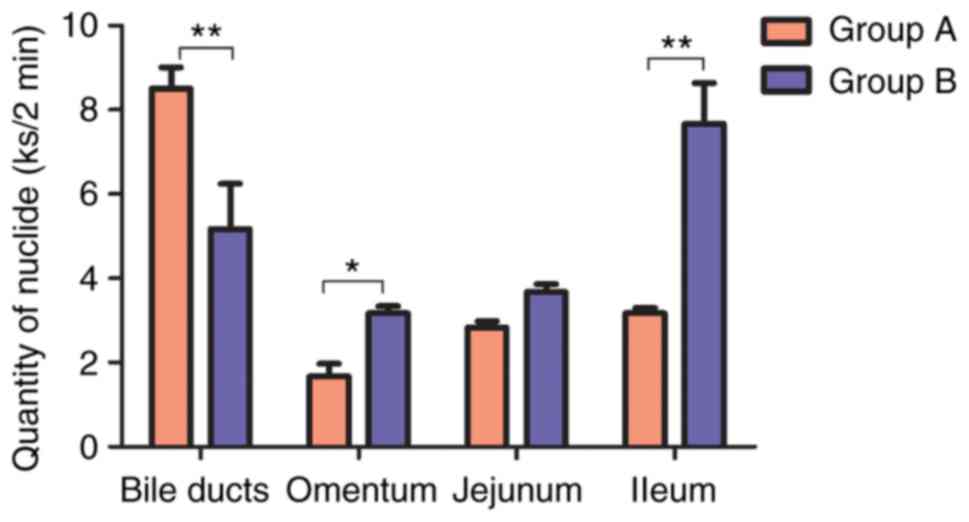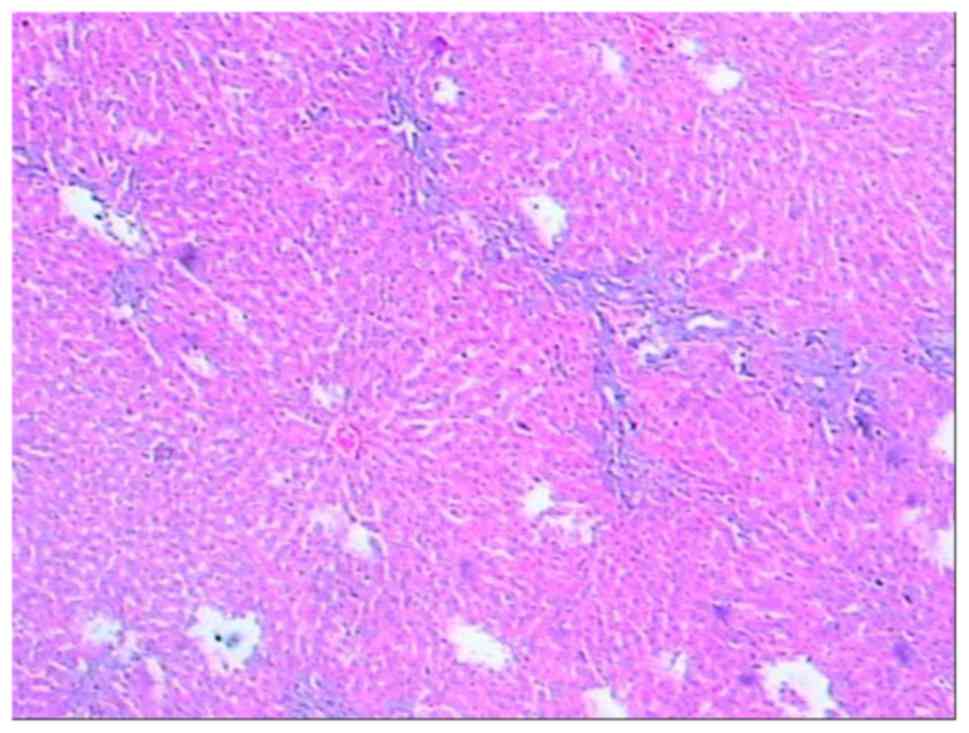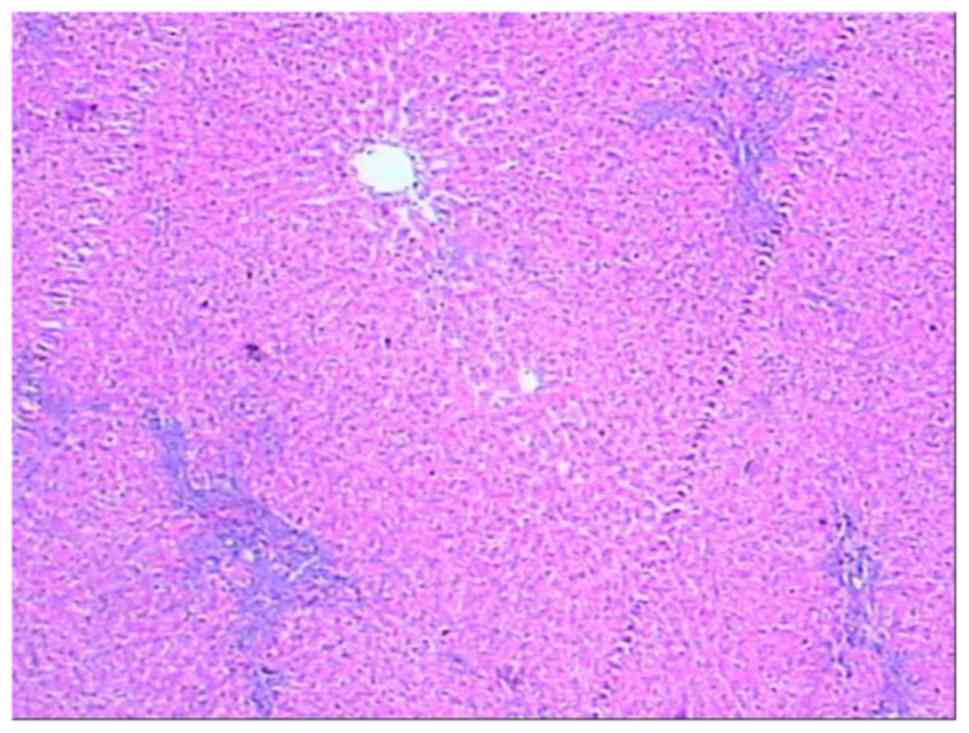|
1
|
Bulte JW, Schmieder AH, Keupp J, Caruthers
SD, Wickline SA and Lanza GM: MR cholangiography demonstrates
unsuspected rapid biliary clearance of nanoparticles in rodents:
Implications for clinical translation. Nanomedicine. 10:1385–1388.
2014. View Article : Google Scholar : PubMed/NCBI
|
|
2
|
Ferreira MA, Santos JS, Dutra RA, Salgado
W Jr, Kemp R, Domiciano C, Ramalho LN, Sankarankutty AK and
Castro-e-Silva Od: Bilioduodenal anastomosis in rats with
extra-hepatic biliary obstruction is followed by lesions ischemia
and reperfusion-induced. Acta Cir Bras. 23 Suppl 1:S47–S52. 2008.
View Article : Google Scholar
|
|
3
|
Kemp R, de Araújo WM, de Castro AA,
Ardengh JC, Neder L and dos Santos JS: Influence of biliary
drainage on the repair of hepatic lesions in biliary fibrosis. J
Surg Res. 169:e127–e136. 2011. View Article : Google Scholar : PubMed/NCBI
|
|
4
|
Wang ZK, Xiao JG, Huang XF, Gong YC and Li
W: Effect of biliary drainage on inducible nitric oxide synthase,
CD14 and TGR5 expression in obstructive jaundice rats. World J
Gastroenterol. 19:2319–2330. 2013. View Article : Google Scholar : PubMed/NCBI
|
|
5
|
Li JY, Zhu X and Fu ZM: Experimental study
of postoperative obstructive jaundice and postoperative care.
Jiangxi Yixueyuan Xuebao. 31:73–76. 1991.(In Chinese).
|
|
6
|
Saiki S, Chijiiwa K, Komura M, Yamaguchi
K, Kuroki S and Tanaka M: Preoperative internal biliary drainage is
inferior to external biliary drainage in liver regeneration and
function after hepatecctomy in obstruction jaundice rats. Ann Surg.
230:655–662. 1999. View Article : Google Scholar : PubMed/NCBI
|
|
7
|
Su X, Luo KF, Wu L, Wu LL and Li Wen: The
correlation study of the plasma diamine oxidase activities and the
intestinal barrier function in rats with obstructive jaundice after
internal and external biliary drainages. Xian Dai Sheng Wu Yi Xue
Jin Zhan. 17:3216–3219. 2014.(In Chinese).
|
|
8
|
Gong YH and Li W: The different effects of
internal and external biliary drainages on the blood levels of
endotoxin, interleukin-2 and interleukin-6 in rats with obstructive
jaundice. Weichangbingxue He Ganbingxue Zazhi. 4:329–331. 2008.(In
Chinese).
|
|
9
|
Zeng Y, Zhang Y, Zheng S and Dong J:
Establishment of model of selective external biliary drainage in
rats with obstructive jaundice. Zhonghua Xiao Hua Wai Ke Za Zhi.
6:209–212. 2007.(In Chinese).
|
|
10
|
Zhang SH, Liao CX, Zhang CX, Deng H, Zhu
H, Lei L and Yao C: Establishment of a mouse model of biliary
obstruction and its dynamic observations. Nan Fang Yi Ke Da Xue Xue
Bao. 28:1579–1581. 2008.(In Chinese). PubMed/NCBI
|
|
11
|
Wu W, Yang Y and Huang Q: Bilirubin
metabolism after obstructive jaundice in rats. Zhonghua Gan Dan Wai
Ke Za Zhi. 5:288–291. 2001.(In Chinese).
|
|
12
|
Ni Y, Marchal G, Lukito G, Yu J, Mühler A
and Baert AL: MR imaging evaluation of liver enhancement by
Gd-EOB-DTPA in selective and total bile duct obstruction in rats:
Correlation with serologic, microcholangiographic, and histologic
findings. Radiology. 190:753–758. 1994. View Article : Google Scholar : PubMed/NCBI
|
|
13
|
Kountouras J, Scheuer PJ and Billing BH:
Effect of prolonged bile duct obstruction in the rat on hepatic
transport of bilirubin. Clin Sci (Lond). 68:341–347. 1985.
View Article : Google Scholar : PubMed/NCBI
|
|
14
|
Huang Q, Liu C, Zhu C, Xie F and Hu S:
Postoperative anastomotic bile duct stricture is affected by the
experience of surgeons and the choice of surgical procedures but
not the timing of repair after obstructive bile duct injury. Int J
Clin Exp Pathol. 7:6635–6643. 2014.PubMed/NCBI
|
|
15
|
McIntyre N and Rosalki S: Biochemical
investigations in the management of liver diseaseHepatobiliary
Diseases. Springer; Berlin: pp. 39–71. 1992, View Article : Google Scholar
|
|
16
|
Nehéz L and Andersson R: Compromise of
immune function in obstructive jaundice. Eur J Surg. 168:315–328.
2002. View Article : Google Scholar : PubMed/NCBI
|
|
17
|
Scopa CD, Koureleas S, Tsamandas AC,
Spiliopoulou I, Alexandrides T, Filos KS and Vagianos CE:
Beneficial effects of growth hormone and insulin-like growth factor
I on intestinal bacterial translocation, endotoxemia, and apoptosis
in experimentally jaundiced rats. J Am Coll Surg. 190:423–431.
2000. View Article : Google Scholar : PubMed/NCBI
|
|
18
|
Sinenchenko GI, Kabanov Mlu and Tikhonchuk
SV: Perspectives of using ozonized solutions in complex treatment
of patients with mechanical jaundice. Vestn Khir Im I I Grek.
163:91–94. 2003.(In Russian).
|
|
19
|
Shibayama Y: Endotoxaemia and hepatic
injury in obstructive jaundice. J Pathol. 159:335–339. 1989.
View Article : Google Scholar : PubMed/NCBI
|
|
20
|
Huang Z and Zou S: Extrahepatic biliary
ductBiliary Surgery. Beijing: People's Medical Publishing House;
pp. 23–26. 2010, (In Chinese).
|
|
21
|
Lv Y, Han X, Gong X, Wu H, Liu N, Hu Y,
Deng J, Li Y and Li Q: Etiological classification of bile duct
dilatation and proportion of each cause in 1430 patients. Int J New
Technol Res. 1:51–54. 2015.
|
|
22
|
Kordzaia D and Jangavadze M: Unknown bile
ductuli accompanying hepatic vein tributaries (experimental study).
Georgian Med News. 234:121–129. 2014.
|
|
23
|
Lv Y and Dang J: Diagnostics and
therapeutics of intra-extrahepatic cholangiectasis (Chinese
edition). Science Press. 1:319–321. 2014.
|
|
24
|
Tag CG, Weiskirchen S, Hittatiya K, Tacke
F, Tolba RH and Weiskirchen R: Induction of experimental
obstructive cholestasis in mice. Lab Anim. 49 1 Suppl:70–80. 2015.
View Article : Google Scholar : PubMed/NCBI
|















